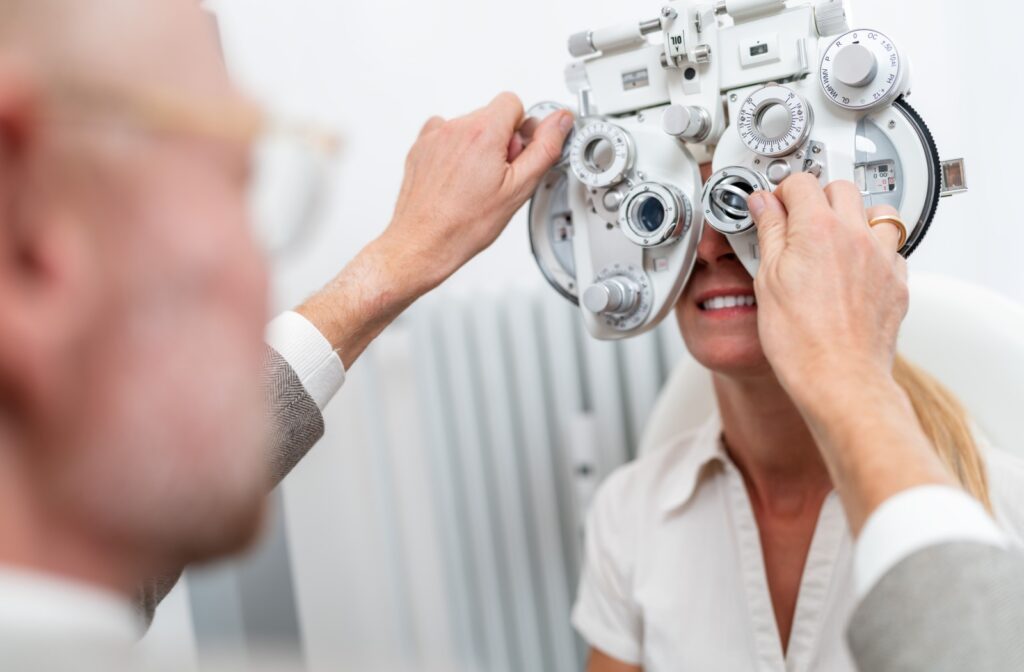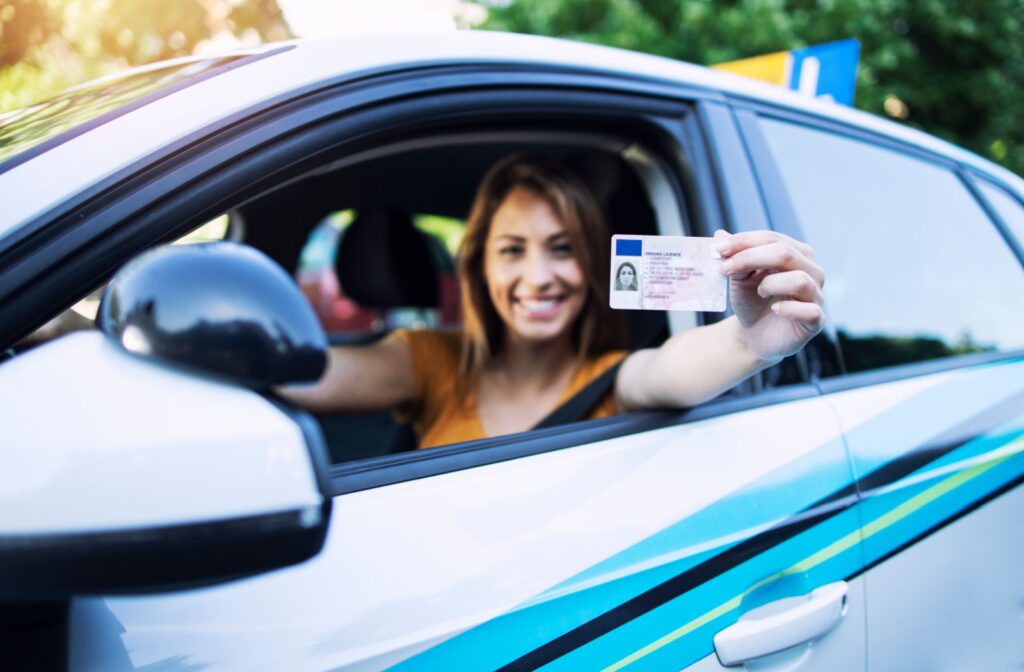Driving offers convenience, independence, and freedom like nothing else. However, getting your license isn’t always as simple as passing the road test. For the safety of fellow drivers and yourself, your vision must be strong and healthy.
As long as you meet California’s DMV’s minimum requirements of at least 20/40 vision or better in your functional eye, you can drive with one eye.
Avoid any surprises at the DMV and stay on top of your vision with routine eye exams.
Is It Legal to Drive with One Eye in California?
Yes, you can legally drive with one eye in California, as long as you meet the minimum vision requirements set by the state Department of Motor Vehicles (DMV).
California law is clear that your ability to drive isn’t determined by how many eyes you have but by the quality of your vision.
California’s Vision Standards for Driving
The California DMV requires drivers to have 20/40 vision or better in at least one eye, with or without corrective lenses.
Having 20/40 vision means you can see at 20 feet what a person with “normal” vision (or the 20/20 standard) can see at 40 feet. For driving, this means you can adequately distinguish objects, signs, and potential hazards at a safe distance.
The DMV may restrict or revoke your driver’s license if you do not meet these requirements.
That said, many people who only have vision in one eye can still readily meet these standards. Some drivers may receive restrictions on their licenses, such as “Corrective Lenses Required” or “No Night Driving,” as a way to enforce safety.
Vision Screening at the DMV
All drivers in California are required to pass a vision test when applying for or renewing their driver’s license. During this test, the DMV assesses:
- Visual acuity: How clearly you see letters or objects from a specific distance.
- Peripheral vision: How sharply you see things outside your direct line of sight while looking straight ahead.
If you wear corrective lenses, such as glasses or contact lenses, be sure to bring them to your DMV vision screening for an accurate test.
The Challenges of Driving with One Eye
While the legal requirements are straightforward, driving with one eye still presents unique challenges. Here’s what you need to know:
Depth Perception
Depth perception relies on binocular vision (both eyes working together). With one eye, judging distances becomes more difficult, but not impossible. This can affect tasks like:
- Estimating how far other vehicles or objects are.
- Parking or maneuvering in tight spaces.
- Timing lane changes or merging into traffic.
Peripheral Vision
Losing vision in one eye reduces your field of view.
Strong peripheral vision means you can detect motion, vehicles, or obstacles within a wide horizontal range, even without turning your head. Peripheral vision is crucial for safe driving, as it enables you to stay aware of your surroundings.

Tips for Safely Driving with One Eye
If you’re driving with one eye, there are strategies to compensate for limited depth perception and peripheral vision. Here are tips to help you stay safe on the road:
- Adjust your mirrors: Position your side mirrors slightly further out to minimize blind spots. This compensates for the reduced field of vision on the side of your weak eye.
- Take extra time for judgment calls: Allow yourself a little extra time to assess distances or make lane changes. Practicing patience can make a significant difference in safety.
- Move your head, not just your eyes: When checking for hazards, move your whole head to widen your view instead of relying on your peripheral vision.
- Drive familiar routes: Sticking to familiar roads can help reduce stress and allow you to anticipate potential challenges. Consider avoiding high-speed highways or complex intersections until you feel confident.
- Invest in driver training or refresher courses: Some driving schools offer specialized training for individuals adapting to monocular vision. These courses can teach you techniques for navigating safely in challenging conditions.
- Limit nighttime driving: Depth perception and peripheral vision issues are exaggerated in low-light conditions. Minimize nighttime driving whenever possible, especially in poorly lit areas.
The Role of Routine Eye Exams
Maintaining good eye health is beneficial for everyone, especially if vision is compromised or lost in one eye due to injury, surgery, or medical conditions.
Routine eye exams are one of the best ways to monitor your vision and overall eye health, ensuring your functional eyes remain sharp and strong.
Safety Comes First
While driving with one eye in California is legal, staying safe requires extra awareness and precautions. With practice and awareness, you can safely continue driving, enjoying the independence and convenience it provides.
If it’s been a while since your last eye exam or the time for your driver’s renewal is approaching (and you don’t want any surprises at the DMV), book an eye exam with Total Vision Bonita. We’re here to help you drive safely and confidently!


